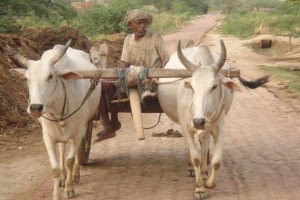The service was offered free of cost to 800 farmers across 40 villages in Surendranagar district in Gujarat, with 400 additional farmers serving as the control group. Two years from the commencement of the service, we find that, in rural western India, our mobile-phone-based service quickly becomes the primary source of agricultural information for farmers given access, and achieves a moderate impact on their behavior and productivity. More importantly, we find that informational barriers provide only a moderate explanation for the large productivity gaps we observe across countries. These findings have important policy implications regarding agricultural extension in India, that are discussed in greater detail in our policy brief titled The Efficacy and Financial Sustainability of Mobile Phone-Based Agricultural Extension.
Another key factor in determining potential and scale-up of services like AO is financial sustainability. We find that the average farmer is only willing to pay $2 for roughly nine months of the service. In comparison, the cost of provision is close to $8 for the same period. In the absence of subsidies, this service would have to cater to farmers with a higher willingness to pay to remain profitable. However, this might create a “digital divide” given that farmers who have a higher demand for AO tend to be less sceptical of technology, and are also wealthier. Implications regarding the cost-effectiveness of mobile phone
Based on the encouraging results from this study, we are carrying out a similar experiment with a sample of 3000 farmers in Madhya Pradesh, organized in to learning groups of 20-30 farmers each. Here, we hope to understand the different channels through which diffusion of information takes place, and also to explore different mechanisms that affect take-up of, and the trust in the information provided. Results from this experiment are forthcoming. Our software partners, Awaaz.de, are also experimenting with different ICT-based models to provide agricultural extension to farmers (and in other fields as well). For further detail, please refer to their website at www.awaaz.de
Project Summary: Investigating the Impact of a Mobile-Based Agricultural Extension Service
Policy Brief: The Efficacy and financial sustainability of mobile phone-based agricultural extension



